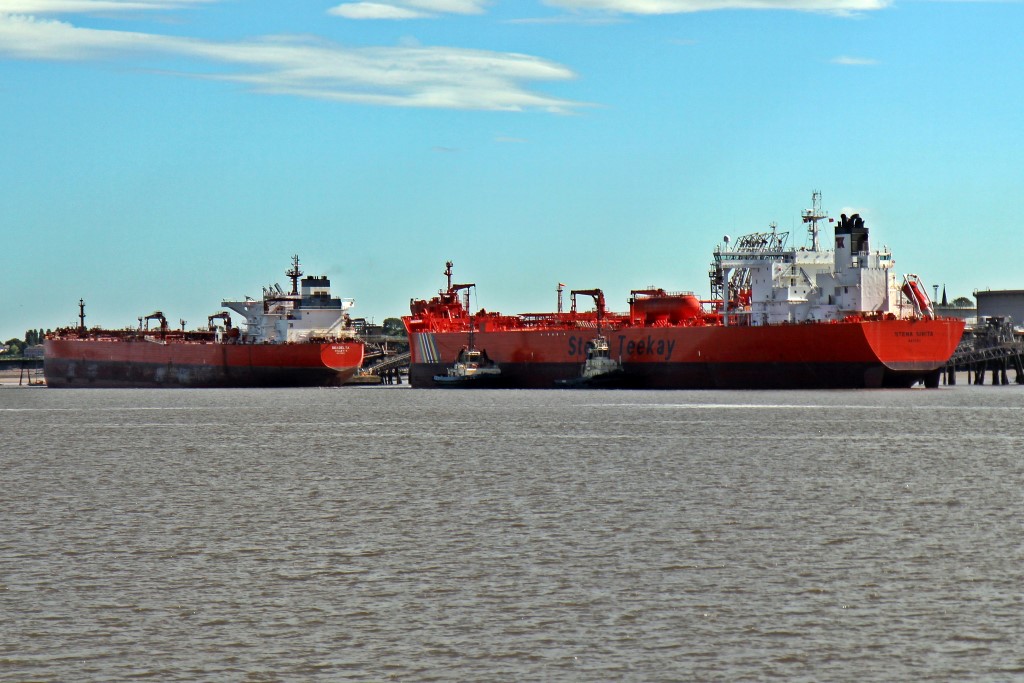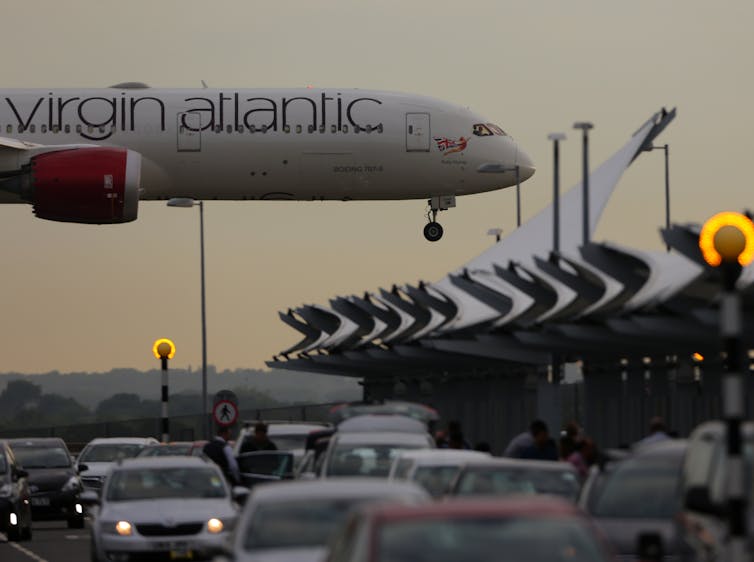COP28: oil pushers scrape the barrel as critical climate talks begin in Dubai

Days before the latest climate summit is due to begin in Dubai, the first flight powered entirely by “sustainable aviation fuel” landed safely in New York.
The twin engines of this Boeing 787 Dreamliner ran on farm waste and used cooking oil, an alternative to the kerosene that is usually dug up, refined and burned to satisfy the wanderlust of a relatively wealthy minority of Earth’s people.
Sadly, the entire event was a stunt, say political economists Gareth Dale (Brunel University London) and Josh Moos (Leeds Beckett University). They point out that the market for cooking oil is poorly regulated, and so “sustainable fuels” can come from palm oil plantations which have devastated orangutan habitat in the tropics.
The result is “a smoke-and-mirrors exercise” designed to give the illusion of a world leaving fossil fuels behind, they say. With climate disasters mounting and greenhouse gas emissions at an all-time high, the same could be said for the UN negotiations themselves.

This roundup of The Conversation’s coverage of COP28 comes from our weekly climate action newsletter. Every Wednesday, The Conversation’s environment editor writes Imagine, a short email that goes a little deeper into just one climate issue. Join the 30,000+ readers who’ve subscribed.
First, let’s check in on the climate.
“Eight years ago, the world agreed to an ambitious target in the Paris Agreement: hold warming to 1.5°C to limit further dangerous levels of climate change,” says Brendan Mackey, an environmental scientist at Griffith University.
“Since then, greenhouse gas emissions have kept increasing … In 2023, the world is at 1.2°C of warming over pre-industrial levels. Heatwaves of increasing intensity and duration are arriving around the world. We now have less than 10 years before we reach 1.5°C of warming.”
COP28 in the United Arab Emirates (UAE) will proceed under the shadow of the UN’s global stocktake. This assessed whether humanity was on course to cut emissions in line with the Paris agreement’s targets by 2030.
The results are in: if all national pledges are fulfilled (not guaranteed), global warming will peak between 2.1-2.8°C this century. Blowing past 2°C, the upper temperature target of the Paris agreement, makes triggering feedback loops (like the release of potent greenhouse gas methane from Arctic permafrost) and catastrophic sea-level rise more likely.
For a chance to avoid climate breakdown and limit warming to 1.5°C, the world needs to prevent greenhouse gases equivalent to 22.9 gigatonnes of carbon dioxide (CO₂) from reaching the atmosphere over the next six years. This is roughly how much the top five polluters (China, US, India, Russia and Japan) emit in a year.
Tasked with leading negotiations to secure this outcome is Sultan Al Jaber, chief executive of Adnoc, the UAE’s state-owned oil company. Al Jaber and the UAE hosts were recently embarrassed by leaked documents showing they intended to pitch oil and gas deals to international delegates at the summit.
“The UK invited ridicule by expanding its North Sea oil fields less than two years after urging the world to raise its climate ambitions as summit host. The UAE seems destined for a similar fate – before its talks have even begun,” say Emilie Rutledge and Aiora Zabala, economists at the Open University.
On the agenda at COP28 is a proposed target for tripling renewable energy capacity and doubling the efficiency of existing sources by 2030. Delegates from countries within the High Ambition Coalition demand a written agreement to halt the burning of coal, oil and gas which accounts for roughly 90% of all CO₂ emissions.
Rutledge and Zabala argue that the UAE is an apt case study for the inertia which seems to prevent countries from meeting these aims. The Persian Gulf state subsidises rampant energy use among its public with oil and gas sales that total 80% of government revenues.
Little wonder the UAE would rather talk about the potential for technology to mop up its emissions.
“Adnoc, along with the wider oil and gas industry, has invested in carbon sequestration and making hydrogen fuel from the byproducts of oil extraction. According to the Intergovernmental Panel on Climate Change (IPCC), such measures, even if fully implemented, will only have a small impact on greenhouse gas emissions,” Rutledge and Zabala say.
Where’s the money?
Another test of the UN negotiations will concern the money needed to help developing countries phase out fossil fuels, adapt to a hostile climate and overcome the damage wrought by greenhouse gases overwhelmingly produced by developed countries.
According to the UN, 80% of climate change can be attributed to G20 countries, a group consisting of the world’s major economies.
“For decades, nations have wrestled over the fraught question of who should pay for loss and damage resulting from climate change,” says Mackey.
“Now we’re close to finalising arrangements for the new Loss and Damage Fund. This will be [a] major issue for negotiators at COP28.”
Lisa Vanhala, a professor of political science at UCL, has followed the wrangling over a fund to compensate poor nations for climate change since one was agreed in principle in 2013. Ten years later, questions remain over who will pay into it, who will be able to draw from it and who will control it.
The last of those three questions was at least partially answered in early November. The World Bank, headquartered in Washington D.C., will administer the fund for an interim period. This would give rich donor countries like the US disproportionate influence over loss and damage funding, Vanhala says, and is a far cry from the partnership model small-island developing states had urged.
The World Bank traditionally offers loans instead of grants. Developing countries have consistently argued this funding should not increase a recipient’s debt burden, Vanhala says. And a board member for another fund hosted by the World Bank has reported that the admin fees it charges are rising and absorbing a larger share of its aid.
“This could mean that, for every US$100 billion offered to countries and communities reeling from disaster, the World Bank will keep $US1.5 billion. This will be hard for an institution still funding the climate-wrecking oil and gas industry to justify,” Vanhala adds.
Aside from loss and damage, rich countries failed to keep a promise to raise US$100 billion of climate change mitigation and adaptation funding by 2020. This money would help the most vulnerable nations build sturdier storm defences and solar farms, for instance, and will be the subject of heated debate at COP28.
US and EU negotiators have argued that China, the world’s second largest economy and its current biggest emitter, should be obliged to contribute to such funding – despite sitting with other developing countries in the UN talks.
But a new analysis by Sarah Colenbrander, director at the Overseas Development Institute and guest lecturer in climate economics at the University of Oxford, tells a different story. By following the substantial climate aid China already provides via other channels, such as multilateral development banks, Colenbrander argues that the real laggard and obstacle to a financial settlement is the US.
“The fastest way to restore trust in the international climate regime would be for the US to step up with its fair share of climate finance,” she says.
“Only once the developed countries have fulfilled their longstanding promise does a conversation about new climate finance contributors become politically possible.”![]()
Jack Marley, Environment + Energy Editor, The Conversation
This article is republished from The Conversation under a Creative Commons license. Read the original article.


